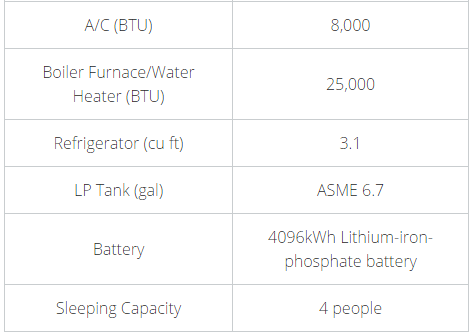There has been discussion about energy consumption in a number of Model X towing threads (1). The real world information from these threads provides value to those who are considering purchasing, renting, or otherwise using a travel trailer. The data are extremely sparse right now, but at least some exploratory analysis can be attempted in order to get a feel for differences between the vehicles.
We have @JimVandegriff towing a 22' Airstream Sport with an X 90D. A Safari Condo Alto R1723 is being towed with an X P90D by @fortytwo. And @jackbowers is towing a Bowlus Road Chief Lithium+ with his X P90D. I think the most valuable comparison is in flat conditions at about 55mph, as this is a reasonable towing speed and aids in controlling for the other variables.
That data, as I've collected so far from their threads and the blog (2), looks something like this.

Something looks awry here. Specifically, the numbers that I was able to glean from @fortytwo's blog posts are suspiciously high compared to their counterparts. This is especially confusing due to the aerodynamic nature of the teardrop, and the fact that it is the lowest weight vehicle in the list. If I missed something from their blog, please let me know. I used the FAQ as well as a couple of other posts, but there aren't a ton of data points in there, at least as far as I could find. I think it's possible that they were running heat, which would definitely skew the numbers out of their favor.
The Bowlus looks terribly impressive at 475Wh/mi. Of course, it's also terribly expensive, costing more than the Model X itself. So budget may constrain many out of that option.
Any other towing data for travel trailers would be a wonderful addition to this thread. I'm also interested in hearing from members with towing experience and/or aerodynamics expertise. I did get a rough number from @AnOutsider off-forum, which was that his high-wall popup, which is 3" higher than the X and 4" wider, square, and heavy, cuts range by about half. On his P90DL that would be something like 700Wh/mi, or (obviously) a 200% towing premium.
Thanks also to @ecarfan who has been having this conversation in PM with me over the last few weeks.
Notes:
We have @JimVandegriff towing a 22' Airstream Sport with an X 90D. A Safari Condo Alto R1723 is being towed with an X P90D by @fortytwo. And @jackbowers is towing a Bowlus Road Chief Lithium+ with his X P90D. I think the most valuable comparison is in flat conditions at about 55mph, as this is a reasonable towing speed and aids in controlling for the other variables.
That data, as I've collected so far from their threads and the blog (2), looks something like this.
Something looks awry here. Specifically, the numbers that I was able to glean from @fortytwo's blog posts are suspiciously high compared to their counterparts. This is especially confusing due to the aerodynamic nature of the teardrop, and the fact that it is the lowest weight vehicle in the list. If I missed something from their blog, please let me know. I used the FAQ as well as a couple of other posts, but there aren't a ton of data points in there, at least as far as I could find. I think it's possible that they were running heat, which would definitely skew the numbers out of their favor.
The Bowlus looks terribly impressive at 475Wh/mi. Of course, it's also terribly expensive, costing more than the Model X itself. So budget may constrain many out of that option.
Any other towing data for travel trailers would be a wonderful addition to this thread. I'm also interested in hearing from members with towing experience and/or aerodynamics expertise. I did get a rough number from @AnOutsider off-forum, which was that his high-wall popup, which is 3" higher than the X and 4" wider, square, and heavy, cuts range by about half. On his P90DL that would be something like 700Wh/mi, or (obviously) a 200% towing premium.
Thanks also to @ecarfan who has been having this conversation in PM with me over the last few weeks.
Notes:





